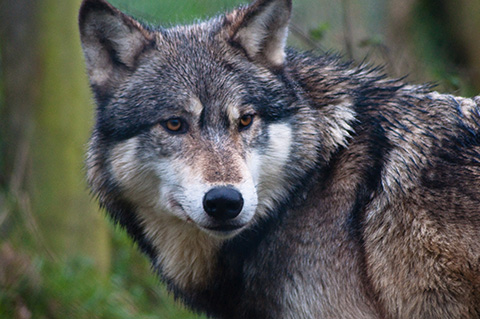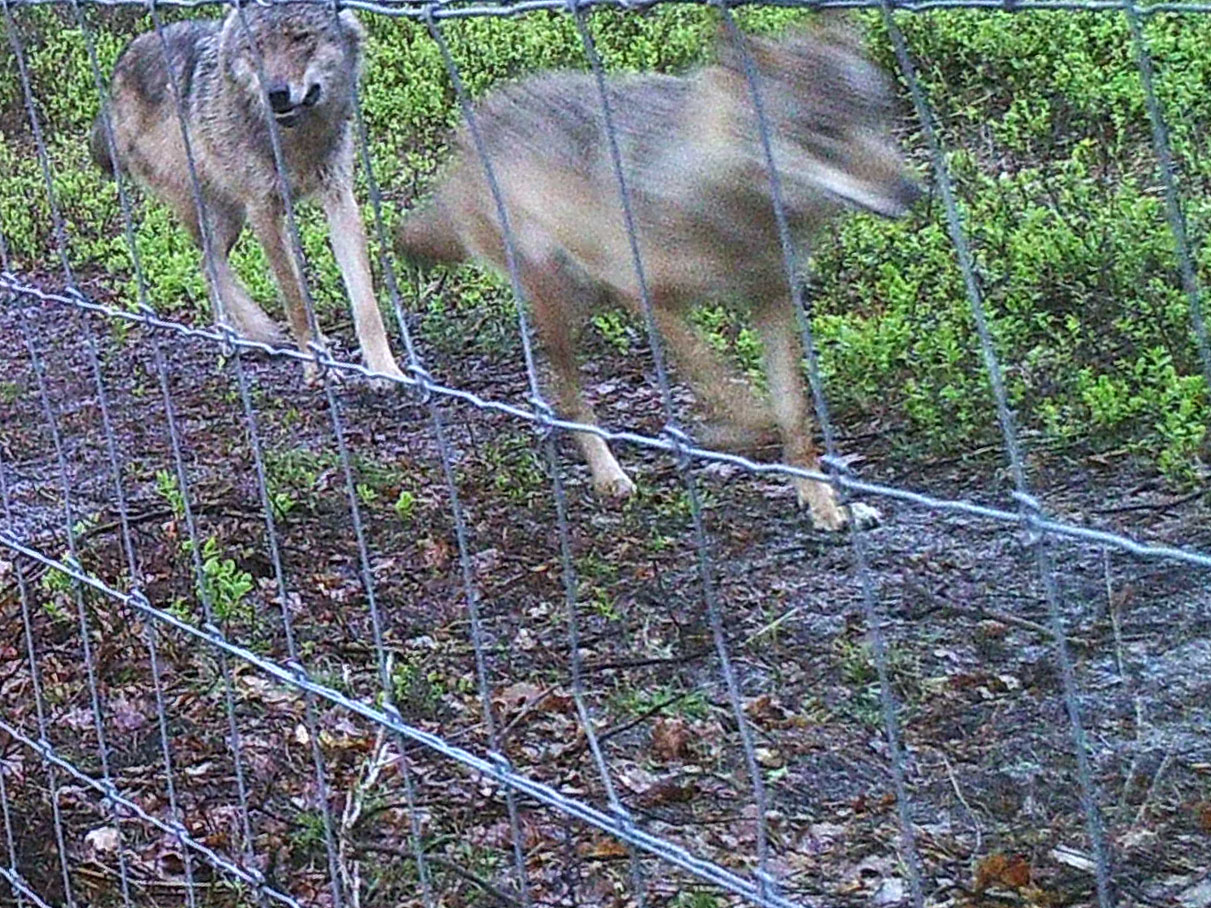
Coexisting with wolves
They're here to stay
Chris Smit has never seen a wolf in the wild. The RUG ecologist has been studying the impact of wolves on the ecological system in the old forests of Poland for ten years, but the shy predators have always managed to elude him. He’s never actually seen one. ‘It’s a bit of a sore spot’, he admits. But then he smiles. ‘Why’d you have to ask me about that?’ he jokes.
He has found wolf tracks, as well as quite a lot of wolf scat. He has often ‘caught’ wolves in the camera traps he set up in the Polish Białowieża Forest. This forest is home to wolves as well as to European bison, lynx, red deer, moose, and boar. He’s seen all of those, but no wolves. ‘My PhD student Annelies van Ginkel has seen one, fortunately’, he says. ‘She deserves it more than me, really.’
Even though the Białowieża Forest is teeming with wolves, a sighting is rare. So your chances of spotting one in the Netherlands are slim to none – even if the recently spotted Veluwe wolves breed the first wolf pack in the Netherlands. ‘If you do happen to spot one during your Sunday morning walk,’ Smit says, ‘be still. Enjoy the moment. And take a picture.’
The wolf couple recently photographed by a camera trap in the Veluwe area
Pack
He’s overjoyed that the wolf-couple has settled in the Netherlands. ‘Who wouldn’t be?’ The wolves came back much faster than people had thought. A few years ago, people were upset and excited by the first wolf-spotting. The lone animal left again fairly quickly. Perhaps it had been scared off by the many curious wolf watchers.
Dogs kill thousands of sheep a year
The next phase of wolf migration back into the Netherlands has begun. Animals are no longer merely passing through; they are starting to settle here. The female, says Smit, will definitely be having young, ‘unless something is wrong’. So now we have to figure out how to best coexist with wolves. They species should be protected, but they also can’t be allowed to do any extreme damage by attacking sheep.
‘Although to be fair, dogs kill way more sheep than wolves do. Dogs kill thousands of sheep in the Netherlands, whereas wolves kill about 160’, says Smit. ‘Just to put things into perspective.’
For centuries, provincial authorities tried their hardest to get rid of wolves. Anyone who killed a wolf received bounty money. Brothers Derk and Albert Jansen from Zuidwolde were paid 35 guilders for killing seven young wolves.
On May 17, 1758, several men from Holten were paid one hundred guilders for killing a large, old wolf. The last wolf hunt took place in Drenthe in 1772 near Dwingeloo, but the wolf got away.
As a result, the species disappeared from the Netherlands over the course of the eighteenth and nineteenth centuries. It’s believed that the last Dutch wolf was killed near Schinveld, Limburg, in 1869.
Actions
The question remains whether we’ll be able to have wolves here. Aren’t the Netherlands too populated for such a large predator?
Smit waves the question away. ‘Wolves and people can coexist just fine’, he says. ‘Even in the Netherlands. But we have to wise up and take action. The worst thing we can do is start shooting them; that’s the reason they disappeared from the Netherlands in the first place.’
Smit was part of an international team of scientists tasked with finding how to best handle the return of wolves in populated areas. Their results were published in Biological Conservation this week.
Vacuum
Shooting the wolves is illegal, he says – but that’s not the only reason it’s a bad idea. It would also be counterproductive. ‘If you kill a wolf, you run the risk of creating a vacuum’, he says. ‘Wolves are territorial. If you get rid of one animal, you create an opportunity for another to take its place.
If you get rid of one wolf, you create an opportunity for another to take its place
Shooting individual wolves also disturbs a pack’s cohesion. These animals normally hunt in close collaboration. If one wolf is missing, the pack becomes unbalanced, which ‘increases the likelihood that they will go after livestock.’
Normally, wolves don’t bother with livestock, preferring to kill either red deer or roe deer. Any sheep that have been attacked have usually fallen victim to a single wandering animal that hasn’t yet settled down in one particular area, says Smit. Sometimes a young animal that’s still learning will grab a sheep. But once a couple bears young and starts a pack, the problem is largely solved.
Fences
Another counterproductive move is building fences everywhere, which only work in large, unpopulated spaces. But it cuts the landscape into ‘tiny pieces’, explains Smit. ‘This doesn’t just affect the wolves. Other animals are won’t be able to move freely either, which is bad for them as well.’
So what works? ‘We have to ensure the wolves have enough prey’, says Smit. But to do that, he says, ‘we would have to drastically change the wildlife management policy currently in place in many areas.’
There are very few areas in the Netherlands where wildlife can roam free. The areas we do have are nothing compared to Germany or Belgium. ‘Dutch wildlife policy is extremely outdated.’ It focuses on preventing damage to agriculture and forests by controlling animal populations. But that’s not useful at all. ‘Roe deer are extremely territorial’, says Smit. ‘There will never be too many. But if there isn’t enough prey, the chances of wolves going after sheep increase.’
Stupidity
A new policy should be accompanied by a flexible compensation policy. Smit perfectly understands how awful it must be for sheep farmers to find six or seven dead animals among their flock in the morning. They should be able to get compensation without too much bureaucratic hassle.
We shouldn’t be hunting them. And they should fear us
Finally, says Smit, people and wolves should live in harmony. Accidents involving wild animals are almost always the results of ignorance. Or, as Smit puts it, ‘stupidity. We have a lot of large herbivores in the Netherlands, such as Scottish highlanders and Konik horses. There are way too many people who decide to put their children on the back of a Konik for a nice picture.’
Sensation
Accidents involving wolves usually happen when relatively tame animals turn out to not be so tame, or when wounded animals lash out when cornered. But normal wolves will avoid human contact. ‘We should be hunting them’, says Smit. ‘And they should be afraid of us.’
If we get it right, we can enjoy the resurgence of wolves in our country. Imagine walking through the woods in Drenthe, or sauntering over the Veluwe, hiking through the Lauwersmeer area – all areas where wolves could conceivably settle – ‘that sensation, when you suddenly realise that you’re not alone. That there could be a wolf nearby.’


